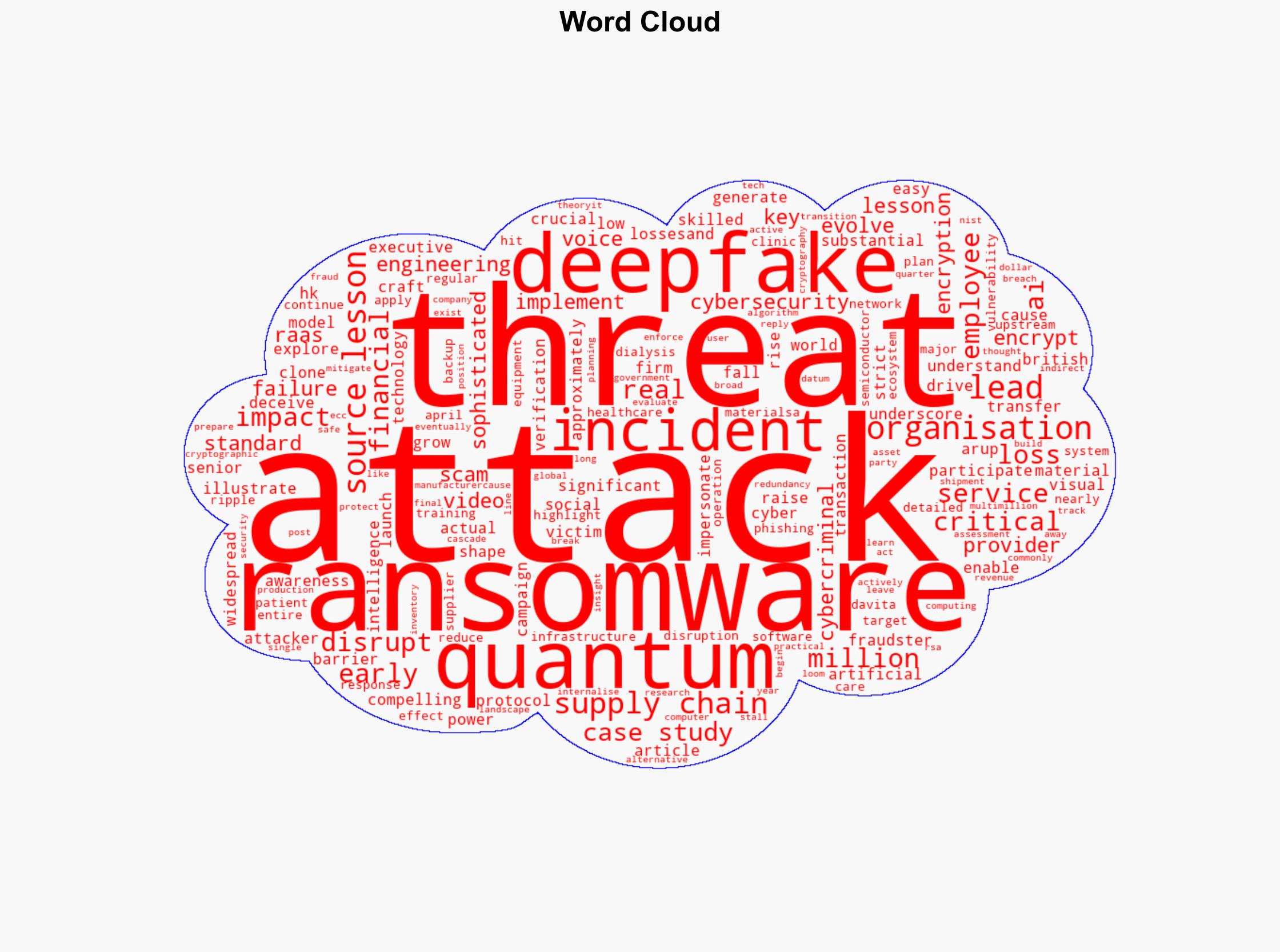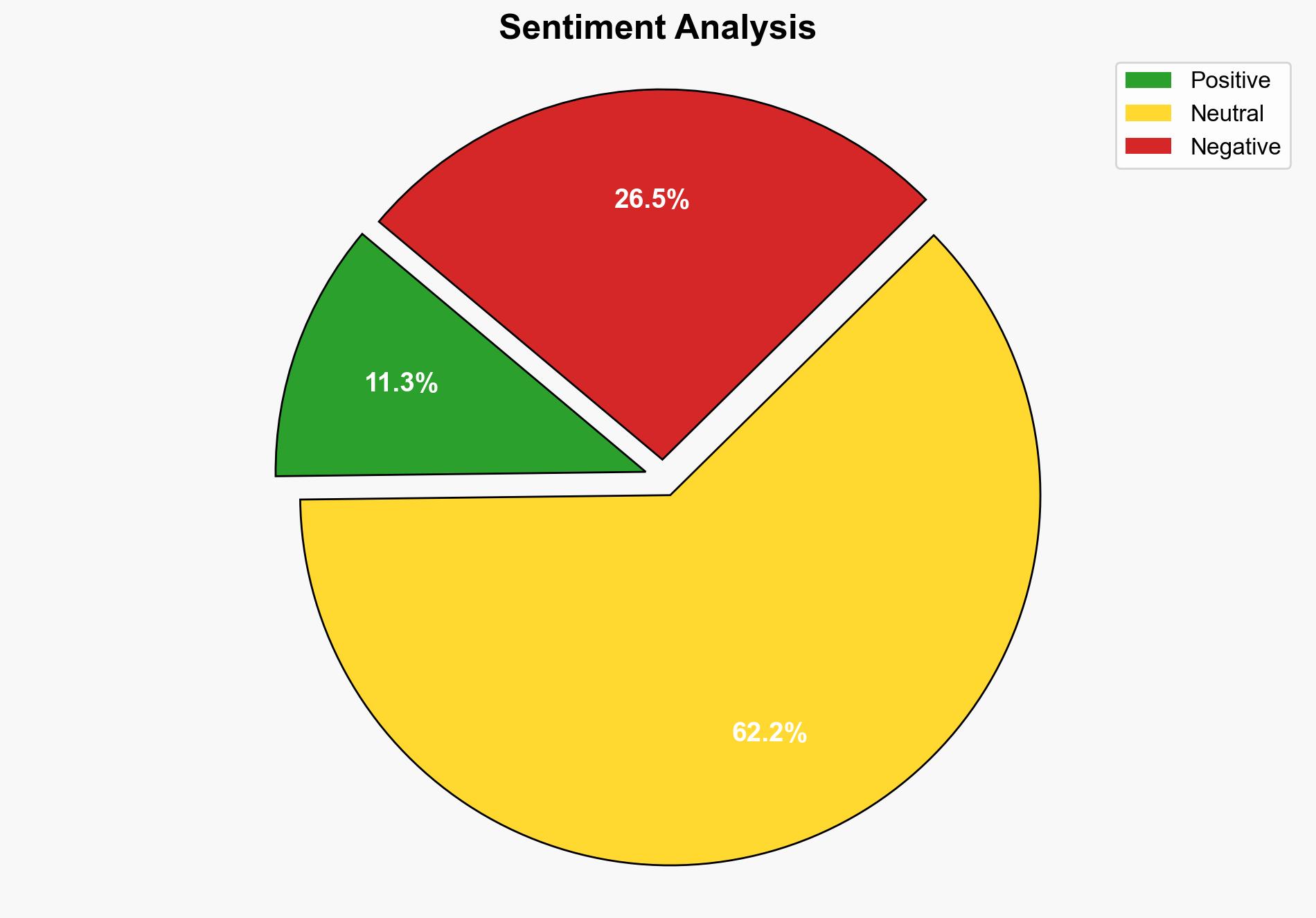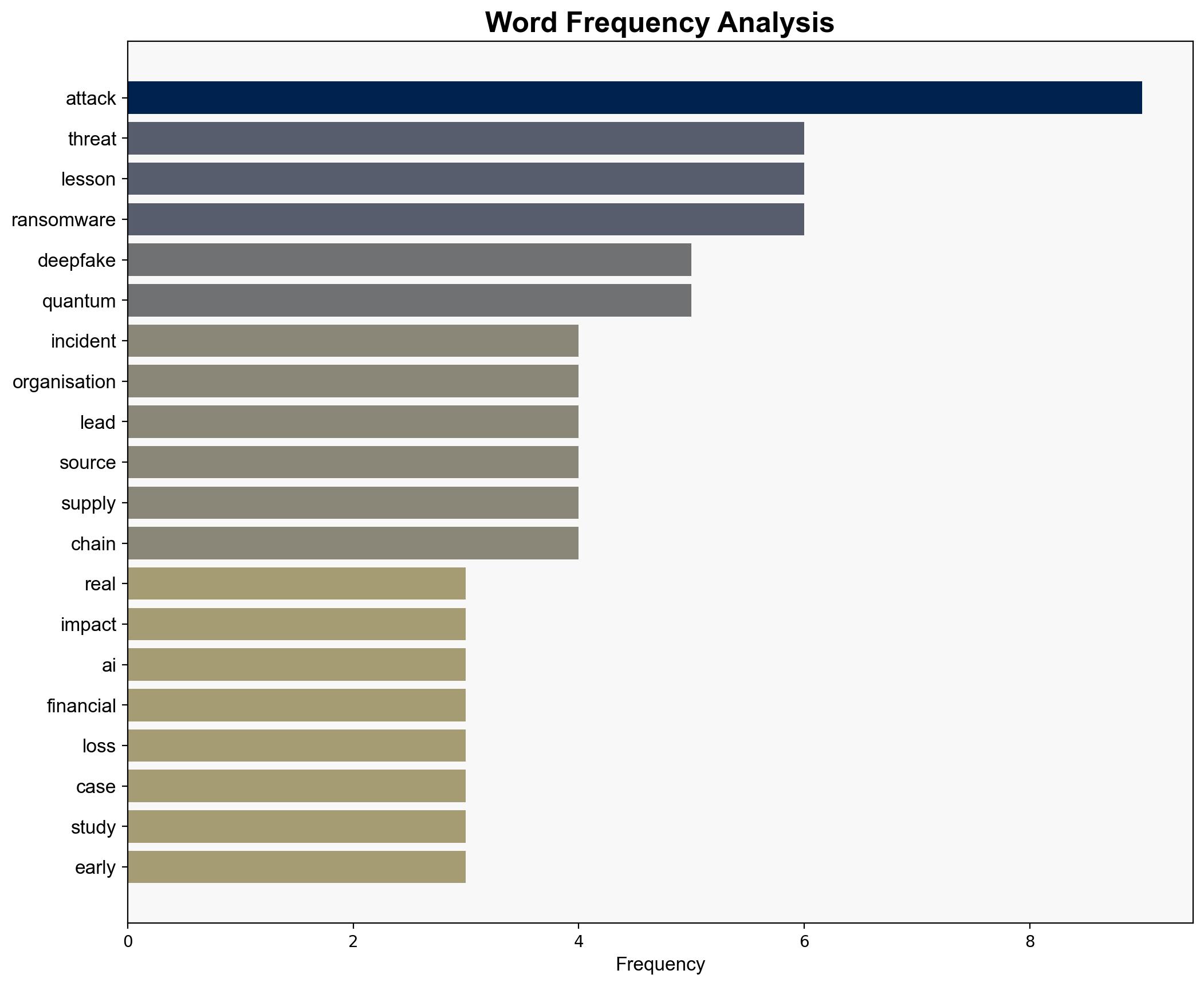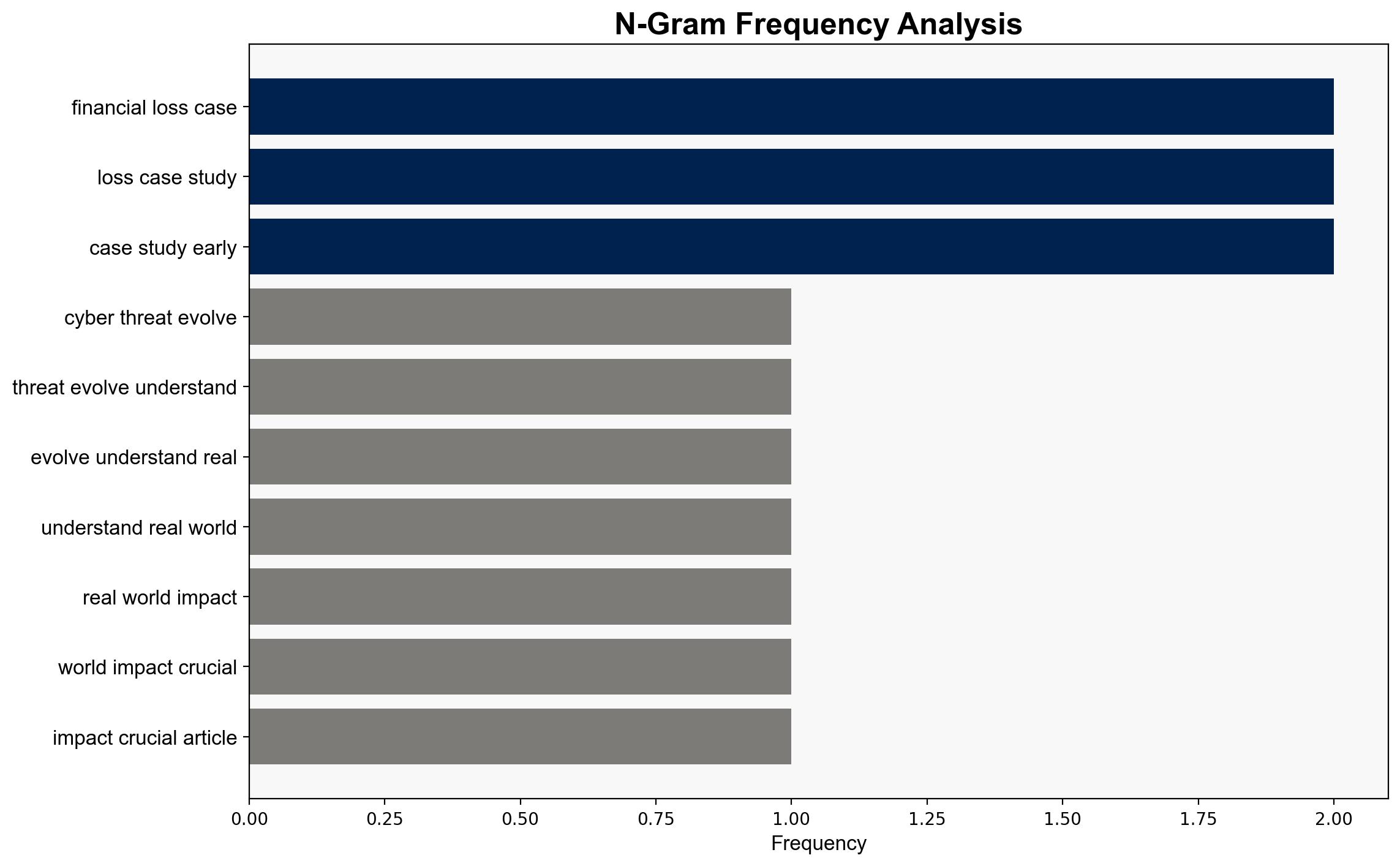Cybersecurity in 2025- Real-World Threats and Lessons Learned – Darknet.org.uk
Published on: 2025-04-23
Intelligence Report: Cybersecurity in 2025 – Real-World Threats and Lessons Learned
1. BLUF (Bottom Line Up Front)
The cybersecurity landscape in 2025 is characterized by sophisticated threats such as AI-powered deepfake scams, ransomware-as-a-service (RaaS), supply chain attacks, and the looming threat of quantum computing. Organizations must adopt stringent verification protocols, enhance employee awareness, and prepare for quantum-safe cryptography to mitigate these risks effectively.
2. Detailed Analysis
The following structured analytic techniques have been applied to ensure methodological consistency:
Analysis of Competing Hypotheses (ACH)
The deepfake scam involving a British engineering firm was analyzed against alternative explanations. The evidence strongly supports AI-driven social engineering as the primary cause, highlighting the sophistication of modern cybercriminal tactics.
SWOT Analysis
Strengths: Advanced AI detection tools; Weaknesses: Insufficient employee training on emerging threats; Opportunities: Adoption of quantum-safe cryptography; Threats: Increasingly sophisticated RaaS models.
Indicators Development
Key indicators include unusual financial transaction requests, increased phishing attempts, and signs of lateral movement within networks, which may signal ongoing or emerging cyber threats.
3. Implications and Strategic Risks
The rise of AI-powered attacks and RaaS models poses significant risks to economic stability and national security. The healthcare sector’s vulnerability to ransomware highlights the potential for widespread disruption. Quantum computing’s potential to break current encryption standards necessitates proactive planning to safeguard sensitive data.
4. Recommendations and Outlook
- Implement strict verification protocols for financial transactions and enhance employee training on deepfake and phishing threats.
- Regularly back up systems and develop detailed incident response plans to mitigate ransomware impacts.
- Begin transitioning to quantum-safe cryptographic methods to protect against future quantum computing threats.
- Scenario Projections: Best Case – Organizations successfully adapt to new threats with minimal disruption; Worst Case – Major sectors face significant operational and financial losses due to unmitigated cyber threats; Most Likely – A mixed outcome with varying levels of preparedness and impact across industries.
5. Key Individuals and Entities
The report references a case involving a British engineering firm, Arup, which fell victim to a deepfake scam. No specific individuals are mentioned by name.
6. Thematic Tags
(‘national security threats, cybersecurity, AI threats, quantum computing, ransomware, supply chain security’)




